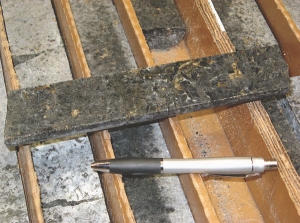An expanded resource for the Nokomis polymetallic deposit in Minnesota “confirms” the deposit is “one of the largest valuable mineral assets in the world,” says Henry Sandri, president and chief executive of Duluth Metals (DM-T).
The new resource incorporates six higher-grade areas within the Nokomis resource that the company’s management says will be the focus of future mine planning — including any early sequencing that might be used to speed up payback of the capital investment.
Sandri says Duluth Metals will focus on the “potential expansion and mine sequencing of the higher grade zones, which will be studied carefully during pre-feasibility in order to enhance and optimize cash flow in the initial years of operation.”
The Nokomis deposit is southeast of the town of Ely in Minnesota, and at the northeastern edge of the Duluth complex camp. Wallbridge Mining initially evaluated the property and then spun it out as Duluth Metals.
Within the total resource, the three highest grade areas (Western, Eastern and Central) together have a combined indicated resource of 92 million tonnes at an average grade of 1.8% copper equivalent using a 1% copper-equivalent cutoff grade. In the inferred category the Western, Eastern and Central high-grade areas contain a total of 22 million tonnes at an average grade of 1.81% copper-equivalent at the same cut-off grade.
The other three higher grade areas (A, B and C) have a combined total of 48 million tonnes in the indicated category at an average grade of 1.75% copper-equivalent, using a 1% copper-equivalent cutoff grade, and an additional 12 million tonnes in the inferred category returning an average grade of 1.68% copper equivalent.
Together, the six higher-grade areas tally roughly 140 million tonnes of indicated resources and an additional 34 million tonnes of inferred. Duluth argues the numbers are significant when compared with the projected 14 million tonnes per year or 40,000 tonnes per day of annual throughput that were initially outlined in a January 2009 preliminary assessment based on a 2008 resource estimate.
Copper equivalents are based on prices of: US$1.75 per lb. for copper, US$7 per lb. nickel, US$10 per lb. cobalt, US$600 per oz. gold, US$1,100 per oz. platinum, US$350 per oz. palladium and US$8.50 per oz. silver.
In total (including the six higher grade areas), Nokomis has an indicated resource of 550 million tonnes grading 0.64% copper, 0.20% nickel, and 0.66 gram per tonne of TPM, or platinum, palladium and gold, for a copper-equivalent grade of 1.51%.
In the inferred category, Nokomis contains 274 million tonnes grading 0.63% copper, 0.21% nickel, 0.69 gram per tonne TPM for a copper equivalent grade of 1.53%.
The calculations are based on all of the 155 infill and step-out drill holes and 67 wedge holes Duluth Metals drilled between 2006 and 2009.
Next year, Duluth will conduct more definition and step-out drilling, metallurgical tests, mine planning, prefeasibility studies and continue environmental baseline studies.
The Nokomis deposit lies about 400 metres below surface and extends to depths of about 1.2 km. The deposit also extends laterally for about 3.5 km along its known drilled off extent.
The deposit makes up a tabular sheet of copper-nickel-PGMs hosted in troctolitic rocks resting on the lower contact between the South Kawishiwi intrusion and the Giants Range Batholith granitic rocks.
Typically, the highest copper-nickel grades are concentrated in the upper 30 metres of the main body.
Duluth Metals has traded in a range of 14¢-$2.34 per share over the last 52 weeks. At presstime the company was trading at $2.22 per share.


Be the first to comment on "Duluth Metals Soars On Nokomis Resource"